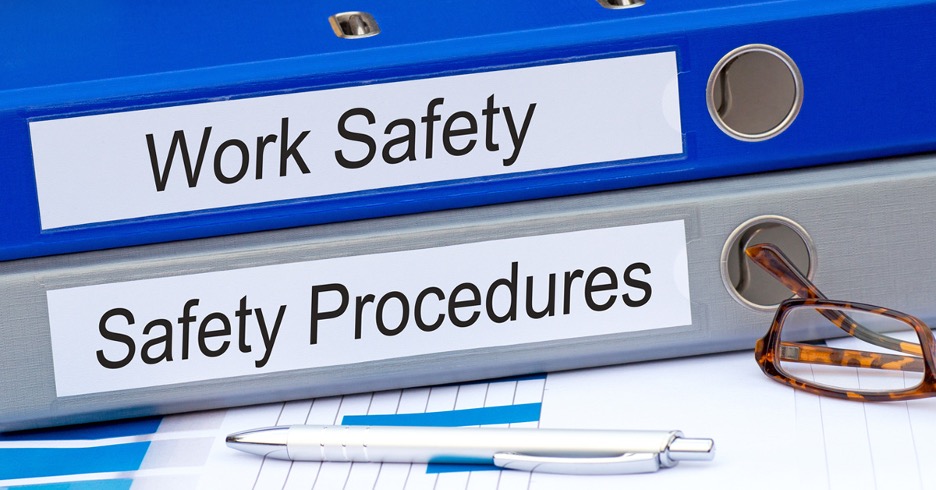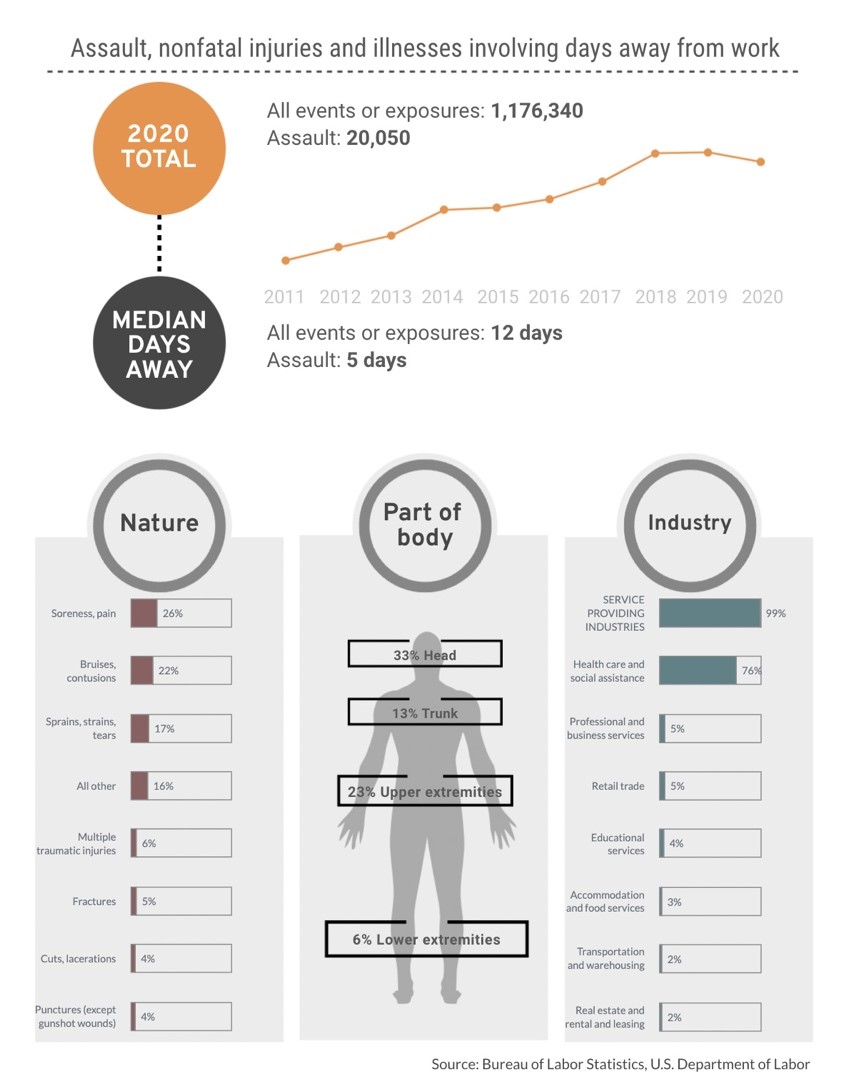The Important Role of a Workplace Violence Policy and Adopting a Panic Button System
by Jiun Wang, on Aug 7, 2023 6:09:35 AM

Workplace violence is a growing concern in many industries. Acts of violence can range from verbal abuse to physical assault, and they can be committed by anyone, including customers, co-workers, or even someone from an employee's personal life. Such incidents can lead to severe physical and emotional harm to the victim and disruption and financial losses for businesses. Employers must take proactive steps to prevent violence in the workplace, such as providing training, establishing clear policies, and promoting a culture of respect and safety.
In this article, we will cover recent workplace violence data, the benefits of a workplace violence policy, and the benefits of using a workplace panic button system to enhance safety measures to protect employees.
Alarming Workplace Violence Data in the U.S.
Businesses must monitor workplace violence data to help ensure the safety and well-being of employees. Understanding the prevalence and nature of violent incidents can guide the development and implementation of effective prevention strategies. Those strategies include modifying workplace design, improving staff training, or revising policies. Also, regularly monitoring workplace violence data can help identify trends and risk factors, enabling proactive measures.
Injury Facts, with data pulled from the U.S. Bureau of Labor Statistics, provides some alarming data from 2020:
- 73.3% of nonfatal injuries occur in females.
- Nonfatal assault injuries in 2020 peak among 25- to 34-year-old workers.
- The most common nonfatal assault type is hitting, kicking, beating, and shoving.
- The service-providing industry accounts for 99% of all nonfatal assaults at work.

(Image: Infographic summaries ‘Assault, nonfatal injuries and illnesses involving days away from work’ in the U.S. that is created by Injury Facts using U.S. Department of Labor data.)
Learning about workplace violence data can be achieved by researching credible sources such as government databases, safety and health organizations, and academic studies. Websites of agencies like the Occupational Safety and Health Administration (OSHA) and the Bureau of Labor Statistics often publish related statistics and reports. Additionally, scholarly articles on workplace violence provide valuable insights into patterns and preventative measures. Participating in relevant webcasts, workshops, or safety training programs can enhance your understanding.
The Benefits of Having a Workplace Violence Policy in Place
Employers should prioritize the development of a workplace violence policy to ensure the safety and well-being of all employees. When the employer creates a comprehensive policy, it showcases the organization's commitment to taking workplace violence seriously. Such a policy serves a preventative function as it outlines the repercussions of violent behavior, thereby deterring potential incidents. In many regions, having this policy is a legal requirement, making its development crucial for compliance. The policy serves as a clear guide, explaining what counts as workplace violence, how to report it, and what happens during an investigation. This clarity removes any confusion and makes the process transparent. As a result, employees are more likely to report incidents without fear. A robust workplace violence policy also helps cultivate a positive organizational culture that supports a safe and respectful work environment, improving productivity and employee retention.
If an incident does happen, a thoroughly implemented policy can help protect the company from potential legal issues by showing that the company took steps to prevent workplace violence. But more than just having a policy is needed — it should be supported with a workplace safety solution, regular training sessions, open lines of communication, and a work culture that prioritizes respect and fairness.
The Importance of Adopting a Workplace Panic Button System
Organizations should consider adopting a workplace panic button system as it provides their employees with an additional layer of safety and security. This technology sends immediate alerts to security personnel or a monitoring service when someone feels threatened or in danger, potentially deterring threats and reducing harm. The presence of such a system can boost employee confidence, as they know help is readily available at the press of a button. Additionally, this proactive approach to safety can enhance customer satisfaction by creating a secure environment, and it shows that the organization is taking steps to mitigate risks, which could protect them from potential legal issues. Beyond violence prevention, panic buttons can also be helpful in emergencies like health crises, making them a versatile addition to any organization's safety measures.
Being a Trusted Leader When It Comes to Safety
It's essential for employers to prioritize safety in the workplace. A safe environment not only protects employees from harm but also boosts their morale and productivity, contributing to the organization's overall success. Additionally, demonstrating a commitment to safety can enhance a company's reputation, fostering trust with clients, partners, existing employees, and potential employees. Implementing safety measures, including a panic button system, can also help mitigate potential legal liabilities. Therefore, focusing on safety is a strategic decision that benefits everyone involved.
Are you ready to learn about workplace panic button systems? Schedule a free demo with React Mobile today.

